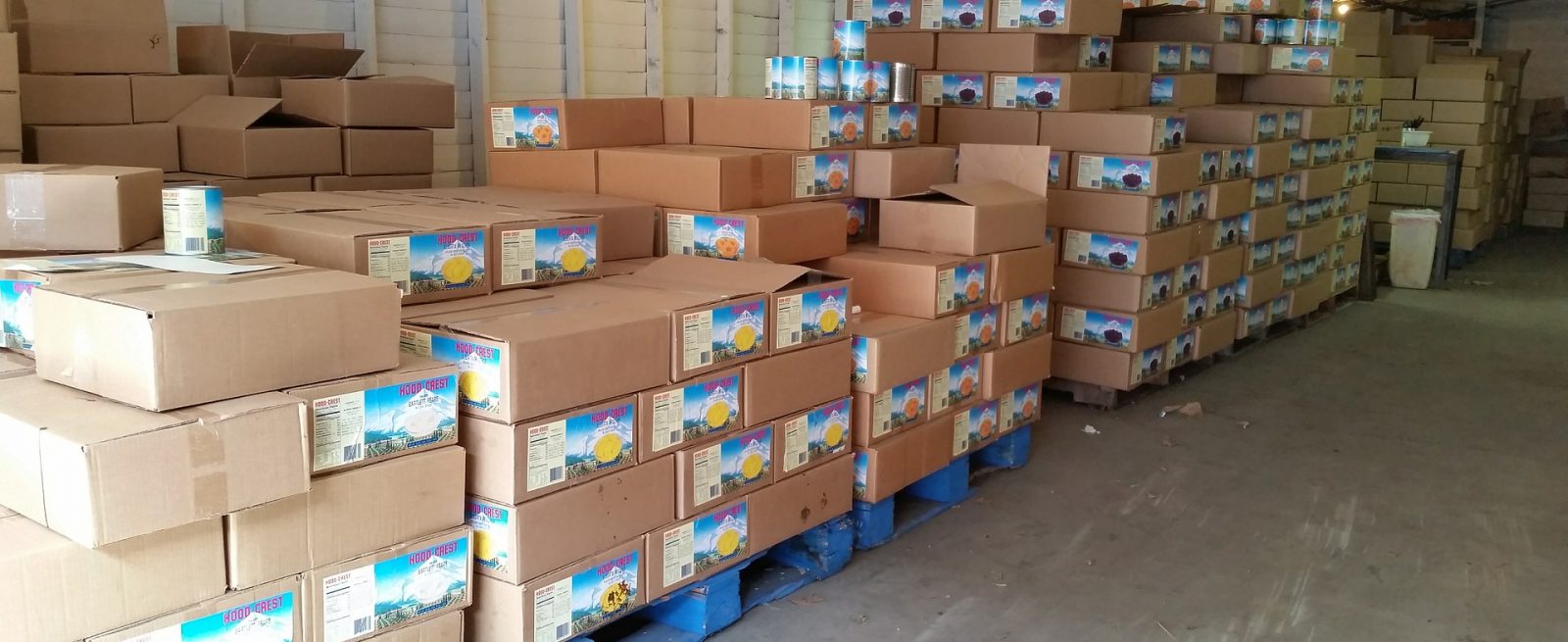Tips on Storing Food in a Warehouse
4 Min Read By David Madden
Warehouses are located all over the globe for various industries, and they store millions of different types of products. There are different regulations for various warehouse uses, but none are more stringent than in food grade warehouses.
These warehouses are often seen as a vital link between the farmer’s fields, the processing plant, the end retailer, and the consumer who purchases the products. To continue operating, these specialized storage facilities must adhere to strict guidelines and undergo rigorous evaluations on a regular basis.
What is a food grade warehouse?
A food grade warehouse is a facility of any size, storing both small and large amounts of food for either short or long periodsof time before leaving for normal food channel distribution. There are several different types of food grade warehouses.
The most common types include dry storage, refrigerated or chilled storage, and frozen or cold storage. The main focus of each facility is to protect the food stored within by maintaining superb sanitation and health standards, such as the use of pallets to keep food from coming into contact with the floor.
Keeping food warehousing safe is critical. Not only does it facilitate trade and economic growth, and prevent monetary losses for food channel members, but it prevents the spread of food-borne disease and illness.

What is not permitted in warehouses storing food?
To keep the food safe from contaminants or other problems, inspections done on food grade warehouses must concentrate on key areas to ensure none of the following are present:
- Holes in window frames or windows
- Leaks around the foundation edges, walls, or in the roof
- Rodent burrows or tracks surrounding the building’s perimeter
- No standing water, weeds, or trash near the building
- Exterior or interior damage such as open pipes, holes, cracks, etc.
- Chemicals, pesticides, or cleaning agents near where food items are stored
Measures should also be in place to prevent cross-contamination from odors. Odor absorption and sensitivity areprevalent in food packaging,so it is important to consider this when deciding where to place items within storage spaces. Many customers looking for food storage take this fact into considerationand wish to know the other types of inventory stored in the building when they are in the process of choosing a third-party logistics (3PL).
McKenna’s Four Principles for Fiod Grade Storage
There are four main principles that any food grade warehouse functions within as a further safeguard against food contamination or damage.
Sanitation Schedule
The entire facility must be tidy and cleaned properly at all times. Documentation is required for any housekeeping or cleaning performed within the warehouse, and these records need to be readily available for viewing.
Personal Training and Hygiene
Every person employed in a food grade storage warehouse is required to wash their hands thoroughly with soap supplied by the company. This must be done in a sink that is hygienic dry system equipped. Records must be kept and updated on everything related to new employee training in certain areas, including crisis and incident management, quality awareness, personal hygiene, and food safety.
Lot Traceability
To ensure inventory rotates on a “first in, first out” basis, there must be an in-house system to trace product date and lot codes.
Pest Control
Any pest control routine changes or updates need to be reported every three months. The perimeter of the warehouse is where control substances are placed to prevent ants, birds, insects, rodents, or any other type of animal from entering the premises.
Basic But Essential Tips on Storing Food
- Generally, any type of frozen food product must be stored at a minimum of 0° F. Products which require dry storage need an area that can be kept between 50° and 70°F. Refrigeratedor chilled products need a temperature range of 34° to 39° F.
- All areas for food storage should have thermometers present where they can be accessed easily for hourly temperature checks. After each check, the temperature must be recorded in a log book.
- Since foods require specific storageprocedures, each separate area needs to have the proper humidity and temperature for correct storage, and all areas must be free from hazards of the microbiological, chemical, or physical nature.
- Humidity levels in dry storage areas should not exceed 15%.
- Do not store food in direct sunlight.
- Too much emphasis can never be placed onFIFO (first in, first out) to prevent possible illness.
Equipment used within the warehouse, such as shelving, humidity and temperature gauges, pallets, storage bins, forklifts, freezers and chilling units needs to be cleaned and sanitized on a regular basis following proper procedures. When purchasing equipment, look for items that are non-porous, resistant to odors and rust resistant.
Unique Challenges
Since warehouses often hold inventory of different types that do not always fall under the same category of regulations, staying compliant with the various rules can be challenging from a management perspective. The need to implement a variety of programs and training initiatives are directly related to regulations for organic products, food vulnerability and defense, and the need to stay HACCP compliant.
It is also hard to create an effective program for sanitation, simply because products move so quickly in and out of warehouses. Most warehouses have dedicated employees who are responsible for cleaning stock locations and sweeping aisles during the workday.
Sanitation challenges go a little bit beyond simply cleaning up leftover debris,however. Issues with environmental contamination can occur due to fluid seepage from a variety of products like seafood, raw meat drippings, and allergen spills.
There is also the potential for other nearby stored products and even the pallet containers to become contaminated. Consider the implications if small amounts of juice from seafood were to spray on the label of a nearby can. Someone touching that can who is severely allergic to seafood could have fatal complications, so awareness of cross contamination is essential.
When you are responsible for storing food in a warehouse, the safety of all future consumers is also your responsibility.
Therefore, essential procedures must be in place to protect every item in your inventory. While it may seem redundant to check the same thermometer every hour, food spoils quickly when not kept at the proper temperature. Each stop on the ride from farm to table plays its own role in the protection of the food we eat. Food safety starts with us all, and food storage warehouse facilities are particularlyimportant links in the chain.


